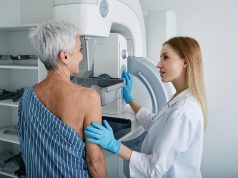Moderate agreement seen between original radiologists and three large language models
By Elana Gotkine HealthDay Reporter
FRIDAY, May 10, 2024 (HealthDay News) — Large language models (LLMs) appear to fall short in classification of breast imaging, which can have a negative impact on clinical management, according to a study published online April 30 in Radiology.
Andrea Cozzi, M.D., Ph.D., from the Ente Ospedaliero Cantonale in Lugano, Switzerland, and colleagues examined the agreement between human readers and LLMs for Breast Imaging Reporting and Data System (BI-RADS) categories assigned based on breast imaging reports written in three languages (Italian, English, and Dutch) in a retrospective study. Using only the findings described by the original radiologists, board-certified breast radiologists and the LLMs, including GPT-3.5, GPT-4 (OpenAI), and Bard, now known as Gemini, were assigned BI-RADs categories. Agreement between human readers and LLMs was assessed using the Gwet agreement coefficient (AC1 value).
The researchers observed almost perfect agreement between the original and reviewing radiologists across 2,400 reports (AC1, 0.91), while moderate agreement was seen between the original radiologists and GPT-4, GPT-3.5, and Bard (AC1, 0.52, 0.48, and 0.42, respectively). Differences were observed in the frequency of BI-RADS category upgrades or downgrades that would result in alterations in clinical management across human readers and LLMs (4.9 percent for human readers versus 25.5, 23.9, and 18.1 percent for Bard, GPT-3.5, and GPT-4, respectively) and that would negatively impact clinical management (1.5 percent versus 18.1, 14.3, and 10.6 percent, respectively).
“The results of this study add to the growing body of evidence that reminds us of the need to carefully understand and highlight the pros and cons of LLM use in health care,” Cozzi said in a statement.
Several authors disclosed ties to the pharmaceutical and health technology industries.
Copyright © 2024 HealthDay. All rights reserved.








